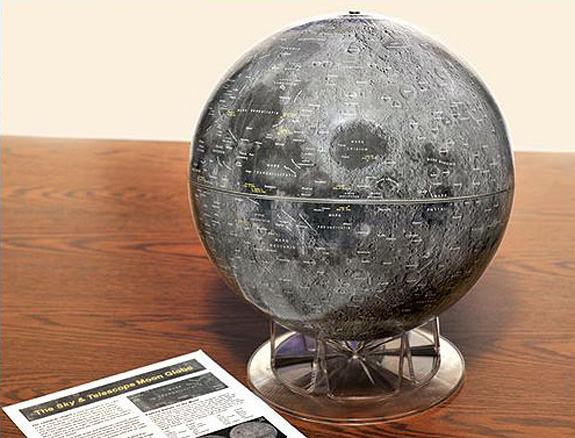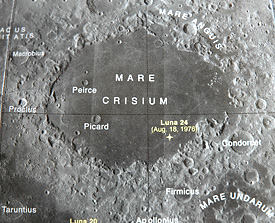
My copy of Sky&Telescope’s new Moon globe arrived recently and I’ve been enjoying it ever since. I have a special fondness for lunar cartography. I’m proud to say that I helped create both the Sky&Telescope Moon Map and Field Map of the Moon and I also got to serve as editor for Antonín Rükl’s classic Atlas of the Moon. But there’s one thing that these flat maps and even computer software can’t do very well — show you the entire Moon from any perspective quckly and easily.

There really is nothing like holding a globe in your hands, and slowly turning it to see familiar features from unfamiliar angles. It really helps you examine craters and maria in context and without distortion. For example, most lunar observers are familiar with Mare Crisium, situated on the Moon’s northeast limb (remember that lunar east and west are opposite sky directions). In telescopes and binoculars, Crisium looks elongated north-to-south. The mare is elongated alright, but in reality it’s stretched east-to-west, as a quick glance at the Moon globe will show.
In the old days (okay, really we’re just talking about the early 1960s here) lunar scientists on the cutting edge of technology projected photographs of the Moon onto a blank, white hemisphere to visualize the true appearance of various features. This technique offered an especially valuable perspective on craters and maria situated near the Moon’s limb. How much quicker would they have figured out the true nature of Orientale if only they had this globe!
What makes the new S&T globe especially noteworthy is that it’s the first one produced using images, rather than artwork. The level of detail and accuracy are excellent. If you’re a fellow Moon enthusiast I think you’ll find this globe an excellent tool and just plain fun — especially when the real Moon is out of sight.
For more information on the Moon globe, visit S&T’s web site.
